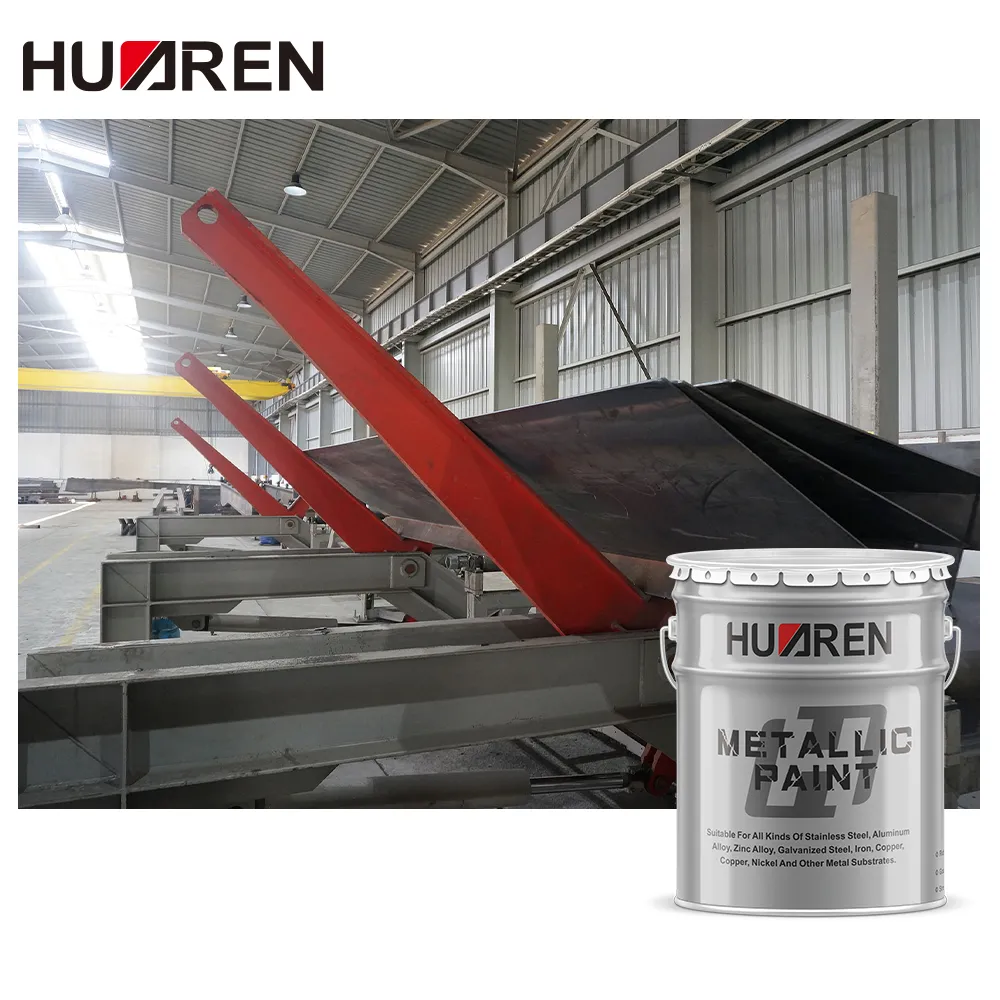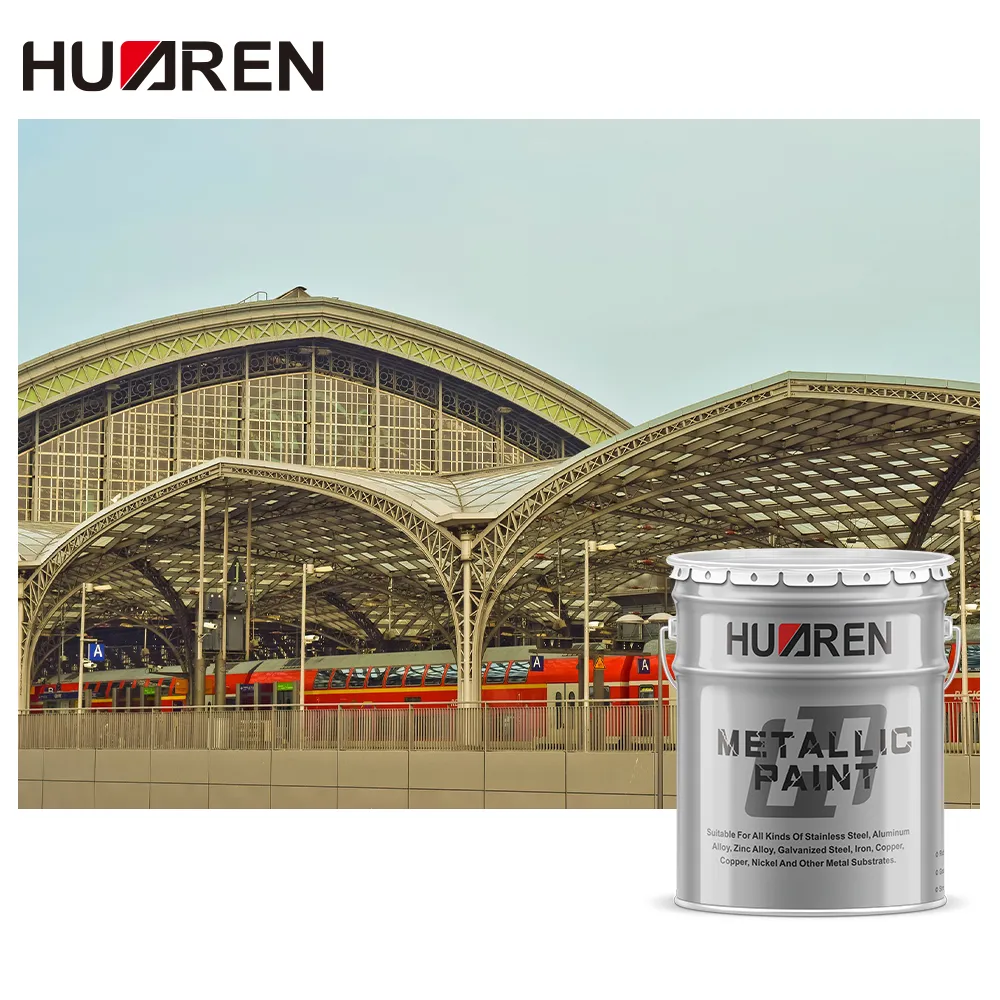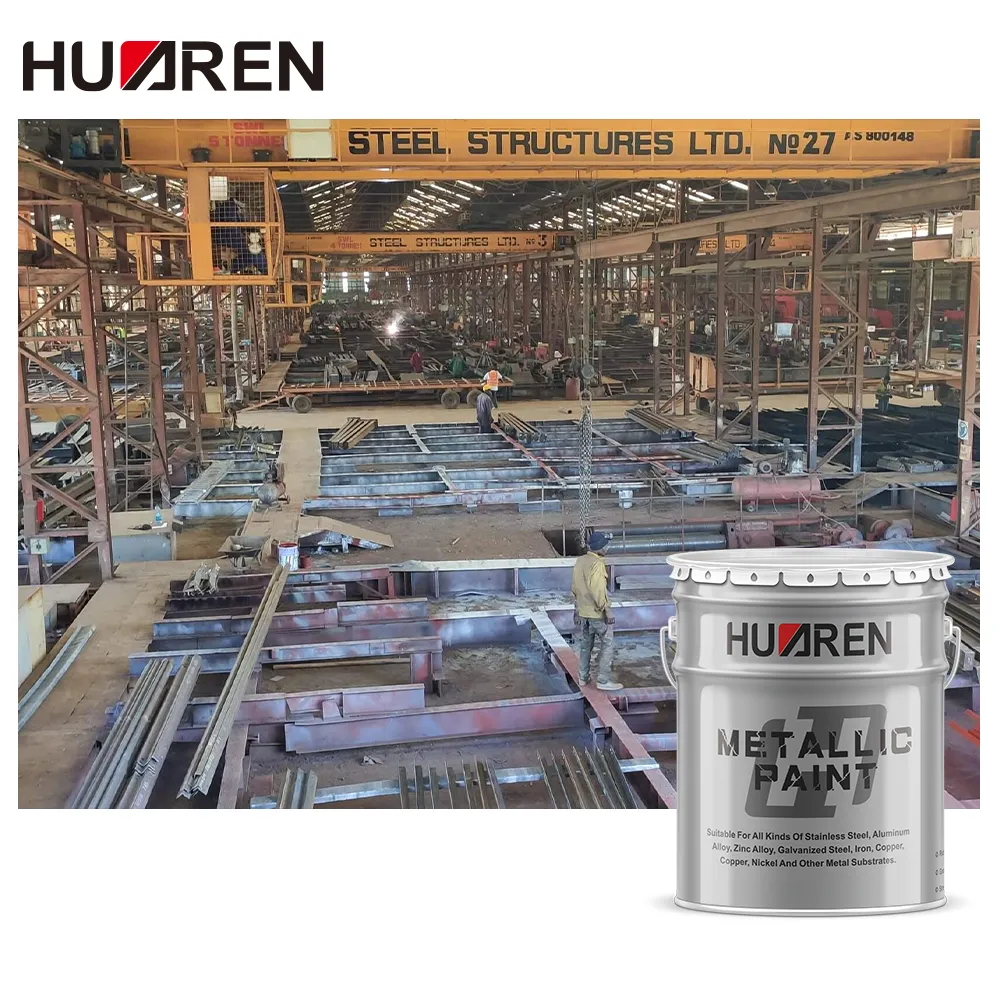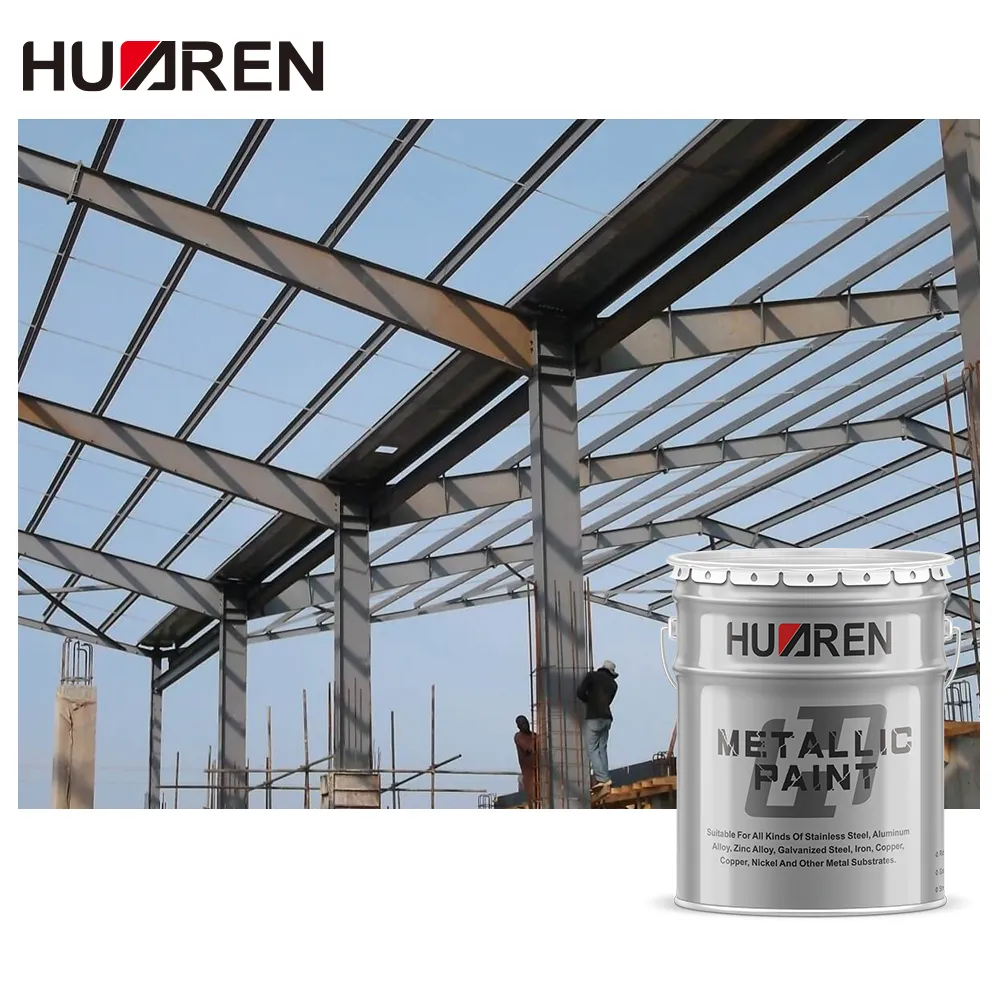In modern industry and construction, metal materials are increasingly used. However, metal materials are very susceptible to corrosion when exposed to air, especially iron metals. Metal corrosion not only affects the appearance, but also reduces its mechanical properties and service life. Therefore, the emergence of rust protection paint solves this problem and is widely used in various fields.
So, what is rust protection paint made of? What is the best rust protection paint? This article will explore these two questions in depth.

What is rust protection paint made of?
Rust protection paint is a coating material specially used to prevent metal materials from rusting and corrosion. It forms a protective film on the metal surface to isolate air, moisture and other corrosive substances, thereby extending the service life of the metal. To achieve this effect, rust protection paint is usually composed of the following main components:
1. Film-forming substance (resin)
The film-forming substance is the most basic component in rust protection paint. It is responsible for forming a protective coating and fixing other components on the metal surface. Common film-forming substances include the following:
● Epoxy resin: Epoxy resin has good mechanical strength and adhesion, as well as excellent chemical resistance and corrosion resistance, so it is often used in high-performance anti rust paint.
● Acrylic resin: Acrylic resin is another common film-forming substance with excellent weather resistance and UV resistance, suitable for outdoor environments.
● Alkyd resin: Alkyd resin is a traditional film-forming substance with a relatively low price. It is widely used in general rust protection paint, especially for wood and metal surfaces.
The film-forming substance determines the mechanical strength, flexibility, adhesion and durability of the paint. It is the most important basic component of rust protection paint.
2. Anti-rust pigment
Anti-rust pigment is a key component of rust protection paint and directly affects the anti-corrosion effect of the paint. Common anti-rust pigments include the following:
● Iron oxide: Iron oxide is a cheap and stable anti-rust pigment that can effectively prevent the oxidation reaction of iron and prevent rust.
● Zinc phosphate: Zinc phosphate is a widely used anti-rust pigment. It not only has excellent anti-rust performance, but also can enhance the adhesion of the coating and extend the service life of the coating.
● Red lead: Red lead is a traditional anti-rust pigment with excellent anti-corrosion performance, but due to its lead content, its use is restricted in countries and regions with strict environmental protection regulations.
● Zinc chromate: Zinc chromate has good anti-rust performance and is often used in high-demand rust protection paint, but because its ingredients contain harmful substances, safety protection should be paid attention to when using it.
These anti-rust pigments achieve the effect of rust prevention by forming a chemical barrier on the metal surface to inhibit metal oxidation.
3. Solvents
The role of the solvent is to dissolve the film-forming substance and the anti-rust pigment into a liquid state so that it can be evenly coated on the metal surface. The volatility of the solvent also affects the drying speed and film-forming quality of the coating. Commonly used solvents include:
● Organic solvents: such as xylene, toluene, etc., which are highly volatile and can dry quickly, but have certain hazards to the environment and human body.
● Water-based solvents: With the improvement of environmental awareness, water-based solvents are gradually widely used in rust protection paint. Compared with organic solvents, water-based solvents are more environmentally friendly and also reduce the emission of harmful gases.
Solvents not only affect the construction performance of the paint, but also the thickness and durability of the coating.
4. Additives
In order to improve the performance and construction effect of the paint, some additives are added to the rust protection paint. Common additives include leveling agents, defoamers, anti-settling agents, etc. These additives can optimize the construction process of the paint, avoid problems such as sagging, bubbles or precipitation in the coating, and ensure the flatness and uniformity of the coating.

What are the different types of anti rust paint?
Anti rust paint can be divided into many types according to its composition and mechanism of action. Different types of paint are suitable for different use environments and needs. The following are several common types of anti rust paint:
1. Oily anti rust paint
This is the most traditional rust protection paint, usually composed of mineral oil, lead, chromate and other ingredients. Its advantages are low price and simple construction. However, the anti-corrosion effect of oil-based paint is relatively general and is usually suitable for short-term protection or low-corrosion environments.
2. Epoxy anti rust paint
Epoxy resin anti rust paint has become the first choice in many industrial and marine applications due to its excellent chemical resistance and mechanical strength. Epoxy anti rust paint can effectively prevent corrosion in harsh environments such as moisture and salt spray, and has strong adhesion, which is suitable for long-term protection needs.
3. Zinc-rich primer
Zinc-rich primer contains a large amount of zinc powder, which forms a "sacrificial anode" protective layer on the metal surface, reacting preferentially with oxygen and moisture, thereby protecting metal structures such as steel. Zinc-rich primer is usually used for large metal structures such as bridges and ships that are exposed to outdoor or marine environments.
4. Acrylic anti rust paint
Acrylic anti rust paint is a water-based paint based on acrylic resin. It has good environmental protection and excellent weather resistance and UV resistance. It is suitable for rust prevention of outdoor metal facilities.
5. Polyurethane anti rust paint
Polyurethane paint is extremely tough and resistant to wear and chemical corrosion, so it is widely used in vehicles, mechanical equipment and other fields. It can form a tough protective film to protect the metal surface from corrosion for a long time.

What is the best anti rust paint?
There are many different types of rust protection paint on the market according to different application occasions and anti-corrosion requirements. To judge which rust protection paint is the best, you need to consider its anti-corrosion effect, durability, environmental performance and ease of construction. The following are several common types of high-quality rust protection paint:
1. Epoxy zinc-rich primer
Epoxy zinc-rich primer is currently the best performing anti-corrosion paint. It contains a high proportion of zinc powder, which prevents metal from rusting through electrochemical protection. The presence of zinc powder forms a "sacrificial anode" effect on the surface of steel, that is, zinc is more susceptible to oxidation than iron, thereby protecting the metal body from corrosion.
Epoxy zinc-rich primer not only has excellent anti-rust performance, but also has excellent adhesion, wear resistance and impact resistance. It is suitable for the protection of steel structures in heavy corrosion environments such as ships, bridges, offshore platforms, and storage tanks.
2. Alkyd anti-rust primer
Alkyd anti-rust primer is a traditional anti rust paint, mainly composed of alkyd resin and anti-rust pigment. It has good adhesion and flexibility, and is suitable for general metal protection, especially in less harsh environments, such as indoor steel structures, mechanical equipment, etc.
Compared with epoxy zinc-rich primer, the anti-corrosion performance of alkyd anti-rust primer is slightly inferior, but its price is relatively low and it is easy to apply, making it a cost-effective anti rust paint.
3. Acrylic anti-rust primer
Acrylic anti-rust primer is an anti rust paint based on acrylic resin, which has excellent weather resistance and UV resistance, making it very suitable for metal protection in outdoor environments. Acrylic anti-rust primer also has excellent drying performance, and the coating forms quickly, making it suitable for projects that require fast construction.
Due to its excellent weather resistance, acrylic anti-rust primer has been widely used in the protection of outdoor steel structures, pipelines and equipment.
4. Polyurethane anti-rust primer
Polyurethane anti-rust primer is a high-performance coating suitable for metal protection in extreme environments. It has excellent chemical resistance, weather resistance and wear resistance, and can effectively resist the erosion of corrosive substances such as acids, alkalis, and salt spray.
Polyurethane anti-rust primer not only has excellent anti-corrosion performance, but also has good decorative effects. Its coating has high gloss and rich colors, and is widely used in the protection of industrial equipment, chemical facilities and ships.
5. Zinc chrome yellow primer
Zinc chrome yellow primer is an anti rust paint containing zinc chrome yellow pigment, which is mainly used in occasions requiring high corrosion resistance. Zinc chrome yellow has excellent anti-rust properties and can effectively prevent the oxidation process of iron. At the same time, it has good adhesion and mechanical properties, and is suitable for the protection of mechanical equipment, steel structures and outdoor metal facilities.
However, since zinc chrome yellow pigment contains harmful substances, personal protection is required when using it, and in some areas with high environmental protection requirements, the use of zinc chrome yellow primer is restricted.

How to choose the best rust protection paint?
The selection of the most suitable rust protection paint needs to be determined according to the specific use environment and protection requirements. The following factors can help choose the right rust protection paint:
1. Environmental conditions
If the metal surface is exposed to a humid and corrosive environment, such as the ocean, chemical plant, etc., you should choose a paint with strong anti-corrosion performance, such as epoxy zinc-rich primer or polyurethane anti-rust primer.
2. Construction difficulty
For some projects that require fast construction or short drying time, acrylic anti-rust primer may be a better choice.
3. Economy
If the protection requirements are not high and the environmental conditions are relatively mild, you can choose an alkyd anti-rust primer with higher economy.
4. Environmental requirements
In occasions with high environmental requirements, water-based anti rust paint can be selected to reduce the use of organic solvents.
How to use anti rust paint correctly?
Choosing the right anti rust paint is only the first step. The correct construction and maintenance of the paint are also crucial. Here are some precautions during construction:
1. Surface treatment
Before applying anti rust paint, the metal surface must be cleaned and treated to ensure that it is free of oil, dust and oxide scale. The quality of surface treatment directly affects the adhesion and anti-rust effect of the paint.
2. Construction environment
The temperature and humidity of the construction environment of rust protection paint will also affect its effect. Generally speaking, the temperature during construction should not be lower than 10°C and the humidity should not be higher than 85% to ensure that the paint can fully cure and play a protective role.
3. Regular maintenance
Even the best quality anti rust paint requires regular maintenance and inspection, especially for metal structures used in harsh environments. Through regular inspections, damage or aging of the coating can be discovered in time, repaired, and further corrosion can be prevented.
Is it necessary to clean the old paint before re-spraying?
When considering re-spraying anti-slip paint, whether it is necessary to clean the old paint depends on the state of the paint surface. If the surface of the old paint has been severely worn, bubbled or peeled, it is recommended to completely remove the old paint before re-spraying to ensure that the new paint layer can be firmly attached to the ground. If the old paint is in good condition and only slightly worn, it can be directly polished and re-painted.
Usually, professional construction teams will use sandpaper or a grinder to gently polish the floor before re-spraying to ensure that the new paint can better bond with the old paint layer and obtain a longer-lasting anti-slip effect.
When sourcing industrial coatings, working with a trusted manufacturer ensures better quality, pricing, and service. Huaren Chemical Industry Co., Ltd., established in 1994 in China, delivers all three. We operate a modern facility with 30 production lines, producing over 20,000 tons of paints annually. Our extensive range covers epoxy, alkyd, phenolic, and chlorinated rubber coatings, suitable for petrochemical, construction, and machinery applications.
We offer customized formulations, flexible MOQs, and wholesale pricing. Contact our team for fast quotes, special promotions, and exclusive deals. Choose Huaren Chemical—a reliable supplier committed to your success.

